Books by Vesna Bikic
BECAP22 Book of abstracts Pots as media: Decoration, technology, and message transmission
19 Tipologija kerami~kih oblika 95 Odlike kerami~ke produkcije D 96 Nasle|e keramike srpskih zema... more 19 Tipologija kerami~kih oblika 95 Odlike kerami~ke produkcije D 96 Nasle|e keramike srpskih zemalja (V.Biki}, N.Cerovi}) D D 96 Oblici posuda i dekorativni stilovi D D 105 Kerami~ki predmeti D 105 Srednjoevropska keramika D D 106 Oblici posuda i dekorativni stilovi D D 115 Kerami~ki predmeti D 116 Osmanska keramika D D 117 Oblici posuda i dekorativni stilovi D D 150 Kerami~ki predmeti 157 Zaklju~na razmatranja 167 Bibliografija 175 Belgrade ceramics in the 16 th -17 th century -Summary
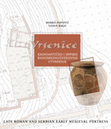
Vrsenice KASNOANTI^KO I SRPSKO RANOSREDNJOVEKOVNO UTVR\ENJE MARKO POPOVI] VESNA BIKI] BEOGRAD 200... more Vrsenice KASNOANTI^KO I SRPSKO RANOSREDNJOVEKOVNO UTVR\ENJE MARKO POPOVI] VESNA BIKI] BEOGRAD 2009. LATE ROMAN AND SERBIAN EARLY MEDIEVAL FORTRESS 7 UVOD 9 TRAGANJA ZA ARHEOLO[KIM NASLE\EM NA PODRU^JU JUGOZAPADNE SRBIJE 13 GEOGRAFSKI POLO@AJ GRADINE U VRSENICAMA I ODLIKE TLA 17 ARHEOLO[KA ISTRA@IVANJA NA GRADINI U VRSENICAMA 15| Stanje lokaliteta 17| Etape istra`ivanja i primenjena metodologija 29| Kulturna stratigrafija 31 NASTANAK I RAZVOJ UTVR\ENJA 31| RIMSKA VOJNA POSTAJA 35 | KASNOANTI^KO UTVR\ENJE 35 | Starije kasnoanti~ko utvr|enje 37 | Odbrambena arhitektura 44 | Stambena arhitektura 49 | Paleovizantijsko utvr|enje 49 | Odbrambena arhitektura 54 | Crkva 58 | Stambena arhitektura 65 | Tipovi i konstrukcije kasnoanti~kih ku}a 67 | Pokretni arheolo{ki nalazi starijeg i mla|eg kasnoanti~kog horizonta 95 | RANOSREDNJOVEKOVNO SRPSKO UTVR\ENJE 97 | Odbrambena arhitektura 100 | Stambena arhitektura 107 | Pokretni arheolo{ki nalazi iz slojeva ranosrednjovekovnog horizonta 123 ZAKLJU^NA RAZMATRANJA 135 KATALOG NALAZA 167 LITERATURA 175 VRSENICE -LATE ROMAN AND SERBIAN EARLY MEDIEVAL FORTRESS (Summary)
GUŠTIN, Mitja, BIKIĆ, Vesna, MILEUSNIĆ, Zrinka. Ottoman times : the story of Stari Bar, Montenegro = Osmanska vremena : priča o Starom Baru, Crna Gora, (Annales Mediterranea). Koper: Univerza na Primorskem, Znanstveno-raziskovalno središče, Založba Annales, 2008. ISBN 978-961-6328-62-3.
Edited volumes by Vesna Bikic
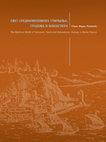
Izreka ka`e: "^ovek snuje, a Bog odlu~uje". Tako je i sa kwigom Svet sredwovekovnih utvr|ewa, gra... more Izreka ka`e: "^ovek snuje, a Bog odlu~uje". Tako je i sa kwigom Svet sredwovekovnih utvr|ewa, gradova i manastira-namera uredni{tva i `eqa prilo`nika bila je da ona bude zbornik radova u ~ast Marka Popovi}a. Uz veliko po{tovawe prema wegovim doprinosima u spoznavawu sredwovekovne pro{losti Srbije i o~uvawu nacionalnog kulturnog nasle|a, zbornik je tako|e trebalo da poka`e, kako stru~noj javnosti tako i samom Popovi}u, a na na~in uobi~ajen u nau~nom svetu, da wegovo delo predstavqa istinsku inspiraciju istra`iva~ima razli~itih disciplina i generacija. Na`alost, pred kraj rada na uobli~avawu publikacije zatekla nas je tu`na vest o wegovom odlasku. Ovom kwigom odajemo po~ast velikom arheologu, kolegi i prijatequ Marku Popovi}u. The saying goes that man proposes, but God disposes, and it has proved to be true for the book The World of Medieval Fortresses, Cities and Monasteries. Its editors and contributors intended it as a festschrift to honour Marko Popovi}. With great appreciation for his many contributions to unravelling the medieval past of Serbia and preserving the national cultural heritage, it was also meant to show, to specialised publics and Marko Popovi} himself, in the form common in the academic world, how truly inspiring his exhaustive work has been to researchers from different disciplines and generations. To our deep regret, the sad news of his passing came just as this collection of essays was being put into final form. With this book, we pay homage to the great archaeologist, colleague and friend Marko Popovi}. * * * Marko Popovi} slovio je za posve}enog, energi~nog i autoritativnog arheologa, a wegov zahtevan karakter nadaleko je poznat. Vojni~ka disciplina i {tedqivost resursa, naro~ito izra`eni u toku terenskih istra`ivawa, a mnogima nezamislivi kako u onom a jo{ vi{e u ovom vremenu, ~esto su mamili osmehe wegovih saradnika. Saradwa s wim predstavqala je izazov svakojake vrste, ali u kona~nici rezultat je uvek bio utemeqen i nesporan. Nesporna je i wegova nesebi~na pomo} koju je pru`ao kolegama u svakoj situaciji i pod svim uslovima. S velikim ponosom i zahvalno{}u mo`emo da istaknemo da je Marko Popovi} stvorio prepoznatqivu {kolu u okviru Arheolo{kog instituta. Dosta rano u karijeri postao je sinonim za srpsku sredwovekovnu arheologiju i uzor mnogim kolegama i u zemqi i u okru`ewu, a to je-zbog {irokog znawa, izuzetne motivacije, efikasnosti i izvanrednog istra`iva~kog dara-ostao i do danas. Zbornikom koji posve}ujemo uspomeni na Marka Popovi}a odajemo po~ast wegovoj nepresu{noj istra-iva~koj radoznalosti. Urednici * * * Marko Popovi} was reputed to be a dedicated, energetic and authoritative archaeologist, and his demanding nature preceded him. Unconceivable to many in earlier times and even more so today, his iron work discipline and careful management of resources, which could best be seen during fieldwork, often brought a smile to the faces of his colleagues. Working with him was a challenge in many ways but, at the end of the day, the results were always there, well founded and indisputable. And he generously shared his knowledge and assisted his colleagues in all situations and under all circumstances. It is with great pride and gratitude that we can say that Marko Popovi} created a recognisable school within the Institute of Archaeology. Quite early in his career he became a synonym for Serbian medieval archaeology, and a role model for many colleagues both in the country and in the region. And he remained one by virtue of his broad knowledge, exceptional motivation, efficiency and outstanding research talent. With this volume dedicated to Marko Popovi} we pay homage to his insatiable spirit of inquiry. Editors 2007 224. Kapije srednjovekovnog Stala}a : analiza konstrukcija i sistema odbrane // Du{ica Mini}, Obrenija Vukadin // Srednjovekovni Stala}.-Beograd : Arheolo{ki institut ; Kraljevo : Zavod za za{titu spomenika kulture, 2007.-Str. 268-283. 225. Crkva Svetog Stefana na [}epan poqu pod Soko-gradom / Svetlana Vukadinovi} // Starinar (Beograd). 57 (2007) 137-174. 226. Arheolo{ka svedo~anstva o ktitorskim sahranama u sredwem veku // Novopazarski zbornik (Novi Pazar). 30 (2007) 15-47. 227. Kula Neboj{a sa delom Priobalnog bedema i Vodenom kapijom II // Nasle|e (Beograd). 8 (2007) 9-28. 228. Manastirski kompleks u Uro{evici : prvi rezultati istra`ivawa // Mile{evski zapisi (Prijepoqe). 7 (2007) 25-30. 229. Smederevski grad-problemi istra`ivawa i obnove // Smederevski zbornik (Smederevo). 7 (2007) 29-41. 230. Beogradska tvr|ava, Priobalni bedem-deo izme|u kule Neboj{e i Vodene kapije II // Glasnik dru{tva konzervatora Srbije (Beograd). 31 (2007) 68-71. 2008 231. Nova saznawa o gorwogradskom Jugoisto~nom bedemu // Nasle|e (Beograd). 9 (2008) 89-104. 232. Jugoisto~ni bedem Beogradske tvr|ave : rezultati dopunskih istra`ivawa / Goran Iliji} // Glasnik Dru{tva konzervatora Srbije (Beograd). 32 (2008) 77-80. 2009 233. An example of anchoritic monasticism in the Balkans : the monastery complex at Kaludra near Berane / Danica Popovi} // Archeologia Abrahamica : Issledovaniÿ v oblasti arheologii i hudo`estvennoé tradicii iudaizma, hristianstva i islama.
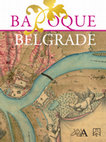
Baroque Belgrade - Transformation 1717-1739; Institute of Archaeology-Belgrade City Museum, Belgrade, 2019
The reception of the Baroque heritage in Belgrade is a very intriguing question for the very fact... more The reception of the Baroque heritage in Belgrade is a very intriguing question for the very fact that what has remained of it is extremely modest from the material viewpoint and concealed under layers of later building projects and spatial planning conceptions. For the few experts who research the different phenomena of Baroque culture and art in our country, this short-lived but extremely important period under Habsburg rule, at the beginning of the eighteenth century, represents a crucial step towards the creation of a modern Belgrade. It was a city in transformation, where the Oriental, mercantile sehir gave way to the European monumental Baroque in a large-scale reconstruction of its urban structure and buildings. The new shaping of space, designed according to the template of fortified Baroque cities, the pivot of which was the regular urban matrix with visual markers – monumental barracks, palaces and squares – was to convey the Habsburg Monarchy’s cultural and political messages in the newly conquered territories, in other words, connect Belgrade to the Central
European culture and idea of the Baroque.The monograph is the product of an effort by a group of experts, specialists in the various aspects of the Baroque heritage in Belgrade and Serbia, viewed in the key of political history and social and cultural phenomena at the beginning of the Modern Age.
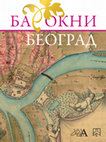
Barokni Beograd - preobražaji 1717-1739; Arheološki institut-Muzej grada Beograda, Beograd, 2019
Recepcija baroknog nasleđa u Beogradu veoma je intrigantno pitanje već i zbog same činjenice da s... more Recepcija baroknog nasleđa u Beogradu veoma je intrigantno pitanje već i zbog same činjenice da su njegovi ostaci, izuzetno skromni u svojoj materijalnoj pojavi, ostali skriveni pod nanosima potonjih graditeljskih poduhvata i urbanističkih zamisli. Za malobrojne stručnjake koji u našoj sredini izučavaju različite pojave barokne kulture i umetnosti, to kratkotrajno ali veoma značajno doba na početku XVIII veka pod vlašću Habzburgovaca predstavlja odlučujući iskorak prema stvaranju modernog Beograda. Bio je to grad u preobražaju, gde je orijentalni trgovački šeher uzmicao pred evropskim monumentalnim barokom u obimnoj rekonstrukciji njegove strukture i zdanja. Novo oblikovanje prostora, projektovano po uzoru na utvrđene barokne gradove – čiju je okosnicu činila pravilna urbanistićka matrica sa vizuelnim markerima, monumentalnim kasarnama, palatama i trgovima – trebalo je da
nosi kulturne i političke poruke Monarhije na novoosvojenim teritorijama, odnosno da Beograd poveže sa srednjoevropskom kulturom i idejom baroka. Monografija je plod napora grupe stručnjaka specijalista za različite aspekte baroknog nasle|a u Beogradu i Srbiji, koji se sagledavaju u ključu političke istorije i sociokulturnih pojava na početku modernog doba.
Сл. 10. пећка патријаршија, припрата, престо светог Саве, "првог патријарха српског" 3 2 Срђан Пи... more Сл. 10. пећка патријаршија, припрата, престо светог Саве, "првог патријарха српског" 3 2 Срђан Пириватрић Сл. 11. манасија, деспот Стефан лазаревић
Fig. 2. The chronicle of Skylitzes, 'driving the romans into a gorge, the Serbs pursue and kill t... more Fig. 2. The chronicle of Skylitzes, 'driving the romans into a gorge, the Serbs pursue and kill them', national library, Madrid 2 0
Book chapters by Vesna Bikic
V. Bikić and J. Vuković (eds.), Pots as media: Decoration, technology and message transmission, 2024
The main approaches for the study of Tripolye-Cucuteni painted ornaments Elena Starkova | Get int... more The main approaches for the study of Tripolye-Cucuteni painted ornaments Elena Starkova | Get into the groove: Decorative techniques and motifs on the Late Eneolithic pottery from the site of Adžine Njive (Western Serbia) Marija Svilar, Dragan Milanović, Miroslav Kočić | The development of ceramic decoration at the Late Bronze Age settlement of Hlyboke Ozero-2: Can we learn more with data mining methods? Anastasiia Korokhina | Apulo-Lucanian Hellenistic Ware. An entangled node between Aegean and Italic pottery production Carlo De Mitri | Ars ornamentum: Analysis of the decorative repertoire present on the tin-glazed wares of southern production from Cencelle (VT) Flora Miele
Бубањ, праисторијско насеље и некропола из новог века, ур.A. Булатовић, Д. Милановић, Т. Трајковић Филиповић, 2022

Pottery Function and Use: A Diachronic Perspective, 2022
Great Plain of the Carpathian Basin are presented (Takács). Finally, prof. Skibo reconsiders the ... more Great Plain of the Carpathian Basin are presented (Takács). Finally, prof. Skibo reconsiders the significance of the "ugly" cooking-pot as an innovation, and reexamines the reasons of devaluing such important technology in archaeology. We would like to thank all the contributors for their interesting articles, for their patience during the review process, and for fulfilling our, the editors' , very demanding requests. We would also like to thank the reviewers, who promptly and meticulously read the papers and offered their suggestions. Our gratitude is extended to our institutions, the Faculty of Philosophy, University of Belgrade, and the Institute of Archaeology, for supporting us, and enabling funding for this book. Finally, we would like to express our special thanks and appreciation to Professor James Skibo for his support and promotion of the BECAP conference.
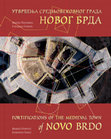
M. Popović and G. Simić, Fortifications of the medieval town of Novo Brdo / Utvrđenja srednjovekovnog grada Novog Brda, 2020
BIBLIOGRAPHY APPENDICES G. Simi}, S. Radovanovi}, Protection Methods and Techniques of the Novo B... more BIBLIOGRAPHY APPENDICES G. Simi}, S. Radovanovi}, Protection Methods and Techniques of the Novo Brdo Castle V. Biki}, Pottery from Novo Brdo -View at the pottery technology, use and style in the late Middle Ages 12 | 16 | 24 | 44 | 46 | 54 | 64 | 80 | 88 | 92 | 120 | 172 | 172 | 196 | 214 | 226 | 226 | 242 | 270 | 277 | 278 | 304 | Sadr\aj 11 | 17 | 25 | 45 | 47 | 55 | 65 | 79 | 89 | 93 | 119 | 173 | 173 | 199 | 215 | 227 | 227 | 243 | 270 | 277 | 279 | 305 | UVODNA RAZMATRAWA GEOGRAFSKI POLO@AJ I TOPOGRAFIJA NOVOG BRDA NASTANAK I RAZVOJ NOVOG BRDA U 14. I 15. VEKU DOSADA[WA ISTRA@IVAWA NOVOBRDSKIH UTVR\EWA Istra`ivawa 1952-1957. godine Istra`ivawa 2015-2016. godine STRATIGRAFIJA KULTURNIH SLOJEVA I ARHEOLO[KI NALAZI Arheolo{ki nalazi ZAMAK GRADA NOVOG BRDA (Gorwi grad) Fortifikacije Zamka -kule i bedemi Gra|evine u Zamku DOWI GRAD -UTVR\ENI DEO GRADSKOG NASEQA Fortifikacije Doweg grada Gra|evine u Dowem gradu PODGRA\E ZAKQU^NA RAZMATRAWA Etape gra|ewa i funkcije delova utvr|ewa Novog Brda Mesto novobrdskog utvr|ewa u razvoju fortifikacija sredwovekovne Srbije BIBLIOGRAFIJA PRILOZI G. Simi}, S. Radovanovi}, Metode i tehnike za{tite zamka Novog Brda V. Biki}, Keramika Novog Brda -pogled na tehnologiju, upotrebu i stil keramike u kasnom sredwem veku WHEN CLOSE TO 60 YEARS AGO MIRJANA ]OROVI]-LJUBINKOVI] WROTE A paper on the Serbian medieval glazed pottery, 1 subtitle Medieval Pottery from Novo



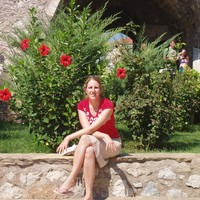




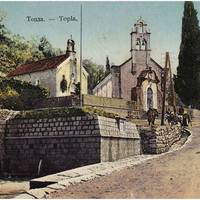
Uploads
Books by Vesna Bikic
Edited volumes by Vesna Bikic
European culture and idea of the Baroque.The monograph is the product of an effort by a group of experts, specialists in the various aspects of the Baroque heritage in Belgrade and Serbia, viewed in the key of political history and social and cultural phenomena at the beginning of the Modern Age.
nosi kulturne i političke poruke Monarhije na novoosvojenim teritorijama, odnosno da Beograd poveže sa srednjoevropskom kulturom i idejom baroka. Monografija je plod napora grupe stručnjaka specijalista za različite aspekte baroknog nasle|a u Beogradu i Srbiji, koji se sagledavaju u ključu političke istorije i sociokulturnih pojava na početku modernog doba.
Book chapters by Vesna Bikic
European culture and idea of the Baroque.The monograph is the product of an effort by a group of experts, specialists in the various aspects of the Baroque heritage in Belgrade and Serbia, viewed in the key of political history and social and cultural phenomena at the beginning of the Modern Age.
nosi kulturne i političke poruke Monarhije na novoosvojenim teritorijama, odnosno da Beograd poveže sa srednjoevropskom kulturom i idejom baroka. Monografija je plod napora grupe stručnjaka specijalista za različite aspekte baroknog nasle|a u Beogradu i Srbiji, koji se sagledavaju u ključu političke istorije i sociokulturnih pojava na početku modernog doba.
carried out by the Institute for the Protection of Cultural
Monuments in Sremska Mitrovica at Palanka site in the east
part of the town in 2014 and 2016, 18 graves from the 17th–
18th century period were discovered. The surveying of this
necropolis is of exceptional importance, for we have an
opportunity for the first time to learn details about the residents
of Sremska Mitrovica at the beginning of the Modern
Age. The conducted analyses have enabled us to get an
insight into their health status, the way of life and habits.
On the other hand, the funerary customs and the grave
finds, primarily rosaries with religious medals, hairpins, as
well as a fragment of goldwork, speak of the social status,
beliefs and the cultural identity of the community.
Kal Viejo (Old) Synagogue in Visokog Stevana Street. This new research has confirmed, and greatly supplemented, previous knowledge about
the settlement of the Dorćol riparian zone through different prehistoric and historical eras. Following the identification of the foundations of
the synagogue and definition of its construction phases, excavations of the deeper layers began. While no evidence of Neolithic occupation was
found, sporadic finds of Eneolithic artefacts have yielded new information on the sequence of prehistoric cultures in the riverine area. Although
limited to the parcel of land and dictated by the disposition of solid walls and the subterranean water level, the excavations brought to light the
partial remains of two dugout houses belonging to the Iron Age and Late La Tène period were discovered, while traces from the Roman period
were somewhat sporadic, being best represented by a pit dating to the 4th century AD. A damaged necropolis and a cultural layer belonging to
the 10th-11th centuries represent the earliest evidence of the structure of Belgrade’s suburbs in the Middle Ages. A settlement layer dating to the
11th-12th centuries was also documented, evidenced by a dwelling – only partially excavated – that, on the basis of pottery finds, was dated to the
late 12th century. In accordance with previous investigations, traces of the later medieval period up until the 15th century are almost completely
absent. That horizon, best represented by a sunken-floored house rich in ceramic artefacts, represents the culmination of the riparian zone’s rural
characteristics. An era of solid architectural constructions followed, but the remains of the buildings dating to the 16th-17th century cannot be
reliably interpreted. A series of walls, retaining walls and floors were discovered, with some of these being incorporated into the later synagogue
building. This simple construction, with a rectangular footprint, measuring 20m x 9m, paved with bricks and with massive pillar bases, was built
at a time post-dating 1632. Based on numismatic finds, we also know that a major renovation of the synagogue, with the later structure retaining
the same dimensions, was carried out at some point after 1770. Written sources also report in detail about a final renovation undertaken in 1819.
The synagogue was expanded through the construction of an apse to the south and an annexe to the north. The synagogue was damaged in 1941,
and, after the end of the Second World War, its remains were buried, with the entire plot completely changing in appearance. The synagogue,
however, did not disappear from memory, and its ruins remain as a testament to Belgrade’s rich history.
problematises its relation to historical models of urban production in the Ottoman Empire. The study focuses on five common
wares, representative of the Middle Danube region, found in well-defined consumption contexts of Belgrade’s intra and extra
muros settlements. The production technology of these wares, including ceramic bodies, slips, and glazes, was studied with
ceramic petrography and chemical analysis, and the results were interpreted using the chaîne opératoire conceptual framework.
The petrographic study was also used for a preliminary provenance determination of raw materials. It is proposed that
Monochrome Glazed Ware, Slip-Painted Ware, and Domestic Unglazed Ware were locally made in Belgrade following the
Ottoman conquest in 1521. The emergence of this production coincides with the abrupt cultural change in the Middle Danube
region marked by migrations and new socio-economic conditions initiated by the Ottomans. Traits of the local production are
compared to the existing corpus of knowledge on the urban craftsmanship and guilds formulated in Ottoman historiography for
the purpose of developing a cross-disciplinary approach to crafts and artisans in the Ottoman Empire.
Iako skromni, nalazi biljaka iz manastira Studenice proširuju dosadašnja saznanja o gajenju i upotrebi biljaka, odnosno ishrani u srednjovekovnoj Srbiji. Jasne indicije u tom smislu pružile su prethodne detaljne analize biljnih ostataka iz tvrđave Ras, kao i preliminarne iz Koznika. Sa novim uzorcima iz Studenice u mogućnosti smo da utvrdimo neke opšte parametre u konzumiranju biljaka, oslanjajući se na hronologiju i funkciju referentnih nalazišta.